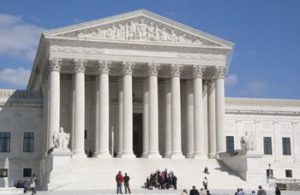In recent months, the United States has witnessed a significant rise in bankruptcy filings across various sectors, raising alarms among economists and policymakers alike. This surge serves as a stark warning for the economy, highlighting the vulnerabilities that many businesses and consumers face in an increasingly volatile financial landscape. As companies struggle to navigate the post-pandemic recovery, the implications of these filings extend beyond individual enterprises, potentially reshaping the economic fabric of the nation.
Understanding the Recent Surge in Bankruptcy Filings Across Various Industries
The recent spike in bankruptcy filings has been observed across multiple industries, with retail, hospitality, and manufacturing sectors being particularly hard-hit. According to data from the American Bankruptcy Institute, filings have increased by over 30% in the past year alone. Many businesses that had previously weathered the storm of the COVID-19 pandemic are now succumbing to the pressures of rising operational costs, supply chain disruptions, and shifting consumer behaviors. Notably, iconic brands that once seemed invincible are now seeking legal protection, underscoring the precarious state of the current economic environment.
Key Factors Contributing to the Increase in Bankruptcy Rates Nationwide
Several key factors are driving the increase in bankruptcy rates across the nation. Firstly, inflation has surged to levels not seen in decades, leading to higher costs for raw materials and labor. This has squeezed profit margins for many businesses, particularly small and medium-sized enterprises that lack the financial cushion to absorb such shocks. Additionally, the end of government stimulus programs and pandemic-related support has left many consumers and businesses without the necessary financial backing to sustain operations. The combination of these economic pressures has created a perfect storm, pushing many companies to the brink of insolvency.
The Economic Implications of Rising Bankruptcy Filings for Businesses and Consumers
The implications of rising bankruptcy filings are profound, affecting not only the businesses that file but also the broader economy. For businesses, bankruptcy can lead to liquidation or significant restructuring, which often results in job losses and reduced consumer choice. For consumers, the fallout can manifest in diminished access to goods and services, as well as increased prices due to reduced competition. Furthermore, the psychological impact of widespread bankruptcies can lead to decreased consumer confidence, which in turn can stifle spending and investment, creating a vicious cycle that hampers economic recovery.
Analyzing the Demographics: Who is Most Affected by the Bankruptcy Surge?
The demographic impact of the bankruptcy surge reveals stark disparities among different groups. Small businesses, particularly those owned by minorities and women, are disproportionately affected, as they often lack the resources to weather economic downturns. Additionally, low-income consumers are facing heightened financial strain, with rising costs of living exacerbating their economic vulnerabilities. The data indicates that younger entrepreneurs and first-time business owners are also struggling, as they grapple with the challenges of establishing a foothold in an uncertain market. This demographic analysis underscores the need for targeted support and intervention to assist those most at risk.
Government Response: Policies and Measures to Mitigate Bankruptcy Trends
In response to the alarming rise in bankruptcy filings, government officials at both the federal and state levels are exploring various policies and measures aimed at mitigating these trends. Proposals include extending financial assistance programs, providing tax relief for struggling businesses, and enhancing access to credit for small enterprises. Additionally, there is a growing call for the implementation of educational programs that equip entrepreneurs with the knowledge and skills necessary to navigate financial challenges. Policymakers are also considering regulatory reforms to streamline the bankruptcy process, making it less burdensome for businesses seeking relief.
Future Outlook: What the Surge in Bankruptcy Filings Means for Economic Recovery
Looking ahead, the surge in bankruptcy filings poses significant challenges for economic recovery. While some analysts predict that a wave of bankruptcies could lead to a necessary market correction, allowing for the emergence of more resilient businesses, others warn that the long-term effects could stifle growth and innovation. The potential for increased unemployment and reduced consumer spending could create a drag on the economy, complicating recovery efforts. As businesses and consumers alike grapple with the implications of this trend, the path to recovery will likely require coordinated efforts from both the private sector and government to foster stability and resilience in the face of ongoing economic uncertainties.
In conclusion, the recent surge in bankruptcy filings serves as a critical indicator of the challenges facing the U.S. economy. With various industries struggling under the weight of inflation, supply chain issues, and the withdrawal of pandemic-related support, the implications of these filings extend far beyond individual businesses. As policymakers and stakeholders grapple with the economic fallout, it is imperative to implement targeted measures that address the root causes of this crisis. Only through collaborative efforts can the nation hope to navigate these turbulent waters and pave the way for a sustainable economic recovery.






















